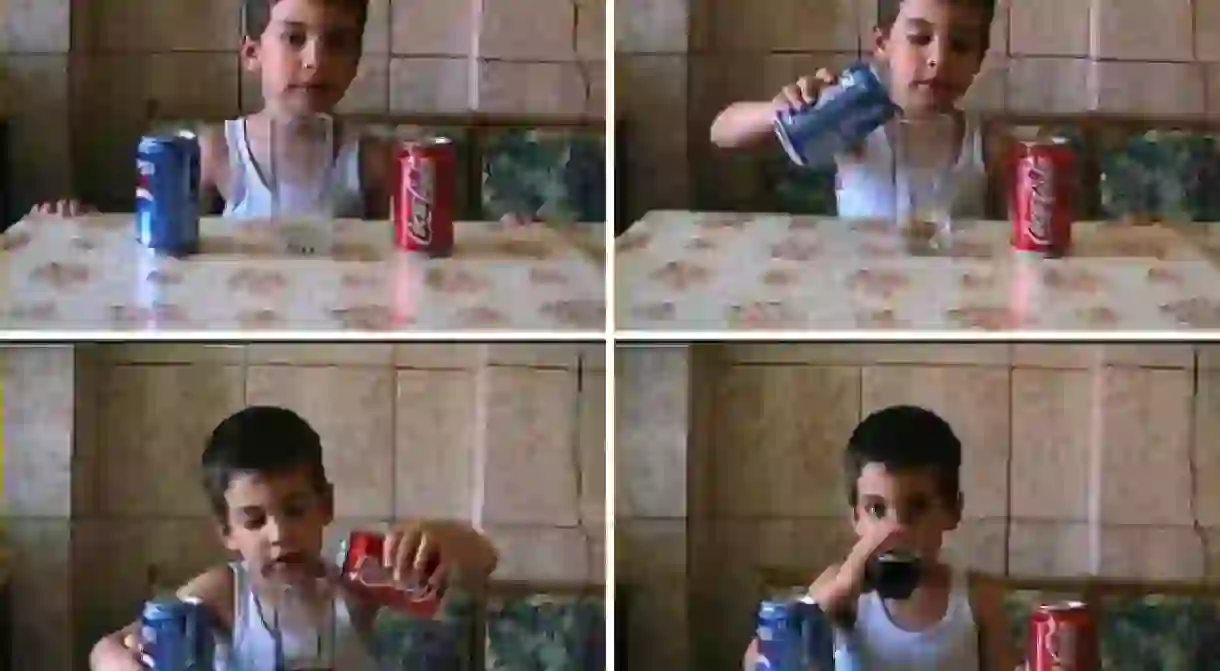Ciprian Muresan: Reconstructing History in Post-Communist Romania

Romanian artist Ciprian Muresan’s multi-media works challenge the manufactured nature of history during the communist period in Romania, when the state promoted their own historical narrative and obscured the truth of real experience.

Communist regimes often inspired uncertainty about the past and fostered antagonisms between official state-depicted histories and their citizens’ personal and collective memories. Alongside such covering up of the past within the communist countries of Eastern Europe were daily issues of censorship and limitations on voice and creativity. This has inspired contemporary artists from once communist countries to confront political and historical issues within their work. Romanian contemporary artist Ciprian Muresan (1977-present) tackles notions of history in his multi-media artworks, which also address and record the kinds of shifts that occurred when communist social systems were replaced with previously foreign capitalist ideals and economies.
Having grown up during the time of the 1989 revolution, and experienced life either side of this transition, Muresan’s background informs his highly political practice in works like Communism Never Happened (2006), an installation of this slogan cut out of propaganda vinyl records. Whilst clearly and almost sarcastically denying a well-known truth, both these words and the material Muresan uses evoke the state’s erasure of some elements of the past during communism through selective media. He also suggests a sense of the current attitude of people in countries striving to shake off their past in order to succeed in a ‘globalizing’ capitalist system.

Boldness with both words and strong visual messages are characteristic of Muresan’s work as he depicts the lifestyle changes experienced by post-communist nations. In the film Choose (2005), a young boy sits at a kitchen table confronted with an empty glass and two cans, one Pepsi one Coca-Cola. As he mixes the two into a potion of well-recognized capitalist commodities and then drinks without dropping the glass, the audience is reminded of a contrast between lack of choice and rationing under socialist regimes, and the extent to which capitalist societies’ mass production has us choosing (or not in this boy’s case) between essentially equivalent competing products.
In Untitled (2010), the objects do the talking as the artist presents a supermarket shopping trolley filled with books, a piece which nods towards the privatization and commercialization of industry in post-communist countries, but also speaks greatly to recent tensions in the UK surrounding the commodification of knowledge in the debate over higher education fees. This relationship and the moralities which the works challenge, makes Muresan’s work internationally relevant, as it becomes accessible to wider audiences.

History is again altered in Muresan’s adaptations of other artist’s works. Having lived through the end of the communist era where history in many countries was written over, reconstructed or simply erased from national conscience through censored and selective media (read Rubie Watson’s Memory, History and Opposition Under State Socialism), Muresan’s reconstructions of cultural events and artists’ works speak to the uncertainty surrounding the truth of the past and present. Leap into the void – after three seconds (2004) comically references Yves Klein’s infamous 1960 image of a man in mid-air leaping from a ledge from the same angle in a similar looking street. The event and our memory of Klein’s suspense-ridden but free-spirited image is transformed as we are made aware of the inevitable yet ungracious return to the ground, which we often forget with the original still. Making his audience more aware in this way of the depth and complexities of particular stories and events, Muresan succeeds in his mission to challenge manufactured histories and the ways in which they are still constructed today.
Whether focusing on the iconoclastic elements of Muresan’s work – how he defies official histories and reshapes other artists’ work – or on his criticisms of some elements of change, his deeply historical and politically engaged art is an encouraging platform for debate. It is work which tests all generations and people from any part of the world to think further about what it means to represent both history and the now.













